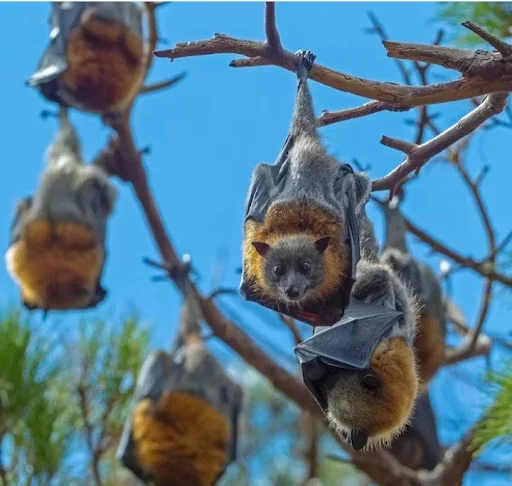What is Nipah Virus Infection ?
What is Nepah virus?
Nipah is a bet borne zoonotic virus that causes infection in human and animals.
What are/is Nipah virus symptoms?
Nipah virus symptoms are fever, cough, headache, vomiting.
Is Nipah virus dangerous?
Yes, Nipah virus is very dangerous. WORLD HEALTH ORGANISATION has described this virus as bio terrorism.
What is the death rate in Nipah virus infection?
Nipah virus infection death rate is very high. It is 40-70%.
Where was first time Nipah virus case found ?
Nipah virus first case was found in Malaysia in 1999.
Why does this virus known as Nipah?
Because first time it was detected in a Malaysian village Nipah so Nipah virus name was given to this virus. In this area Large number of pig farmers were found infected with Nipah virus.
How does Nipah virus spread?
Nipah virus spreads through pig meat. Fruits infected by bats. Human or animals have bitten by bats or eat anything which is infected by Nipah.
What is the treatment of Nipah virus?
Although no specific treatment available for the treatment of Nipah. But some suggest
Oncolytic virus therapy is treatment for Nipah virus infection.
Is there any vaccine for Nipah virus?
No, vaccine for Nipah virus is not developed yet.
Nipah virus a relatively rare but deadly zoonotic pathogen has garnered attention due to its potential for causing severe outbreaks. First identified in Malaysia in 1999 this virus has since emerged sporadically in several countries causing significant public health concerns. In this article we will explore the origin mode of transmission, causes, symptoms, prevention and treatment of the Nipah virus.
Origin and Outbreaks
The Nipah virus is named after the village in Malaysia where it was first identified during an outbreak in 1999. The initial outbreak was linked to infected pigs and the virus was transmitted from pigs to humans causing severe respiratory and neurological symptoms. Subsequent outbreaks occurred in various parts of Southeast Asia including Bangladesh and India. It's important to note that Nipah virus can originate in fruit bats which are considered the natural reservoirs of the virus. The bats can infect other animals including pigs and horses which can then transmit the virus to humans.( image credit to Rene Reigel)
Mode of Transmission
The primary mode of transmission of Nipah virus is through direct contact with infected animals or their bodily fluids. Human-to-human transmission is also possible particularly in healthcare settings where close contact with infected individuals can occur. Additionally the consumption of contaminated food products such as raw date palm sap has been implicated in some outbreaks.
Causes and Risk Factors
The primary cause of Nipah virus infection is exposure to the virus usually through contact with infected animals or their secretions. People at higher risk of infection include those in close contact with animals like pigs and horses as well as those in healthcare settings caring for infected patients. Eating or drinking contaminated food products is another risk factor although less common.
Symptoms
Nipah virus infection can manifest in various ways with symptoms ranging from mild to severe. Common symptoms include fever headache dizziness and confusion. As the disease progresses more severe symptoms may develop including acute respiratory distress encephalitis (inflammation of the brain) and seizures. In severe cases Nipah virus infection can be fatal with a mortality rate ranging from 40% to 70%.
Prevention
Preventing Nipah virus infection is essential to avoid outbreaks and protect public health. Key preventive measures include.
1. Avoiding contact with infected animals
Limiting exposure to pigs horses and bats is crucial in preventing Nipah virus transmission.
2. Practicing good hygiene
Frequent handwashing and using personal protective equipment (PPE) can help reduce the risk of transmission especially in healthcare settings.
3. Safe food handling
Ensuring that fruits especially date palm sap are properly prepared and cooked can prevent the consumption of contaminated food products.
4. Isolation and quarantine
Implementing isolation measures for infected individuals and quarantine for those who have had close contact with them is vital to prevent further transmission in outbreak settings.
5. Vaccination
While there is currently no approved vaccine for Nipah virus research is ongoing to develop one.
Treatment
There is no specific antiviral treatment for Nipah virus infection. Supportive care is the primary approach including managing symptoms providing respiratory support and maintaining hydration. Research into potential antiviral therapies continues but no widely accepted treatment exists at this time.
Nipah virus is a dangerous zoonotic pathogen with the potential for severe outbreaks. Understanding its origin mode of transmission causes symptoms, prevention and treatment is crucial for public health efforts. Prevention remains the most effective strategy with a focus on avoiding contact with infected animals practicing good hygiene and safe food handling. Ongoing research may eventually lead to the development of a vaccine or specific antiviral treatments to combat this deadly virus.







Comments
Post a Comment
Thanks